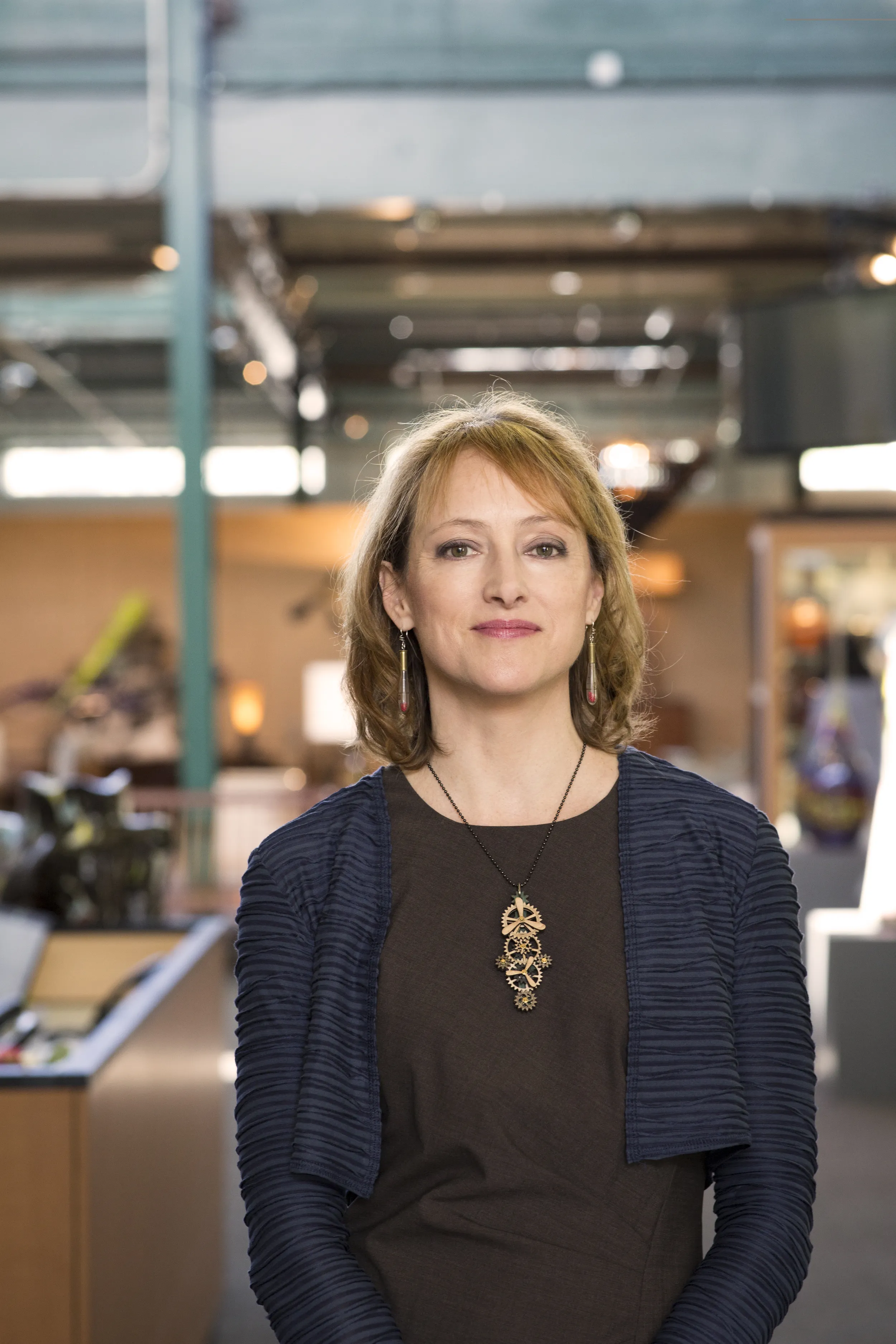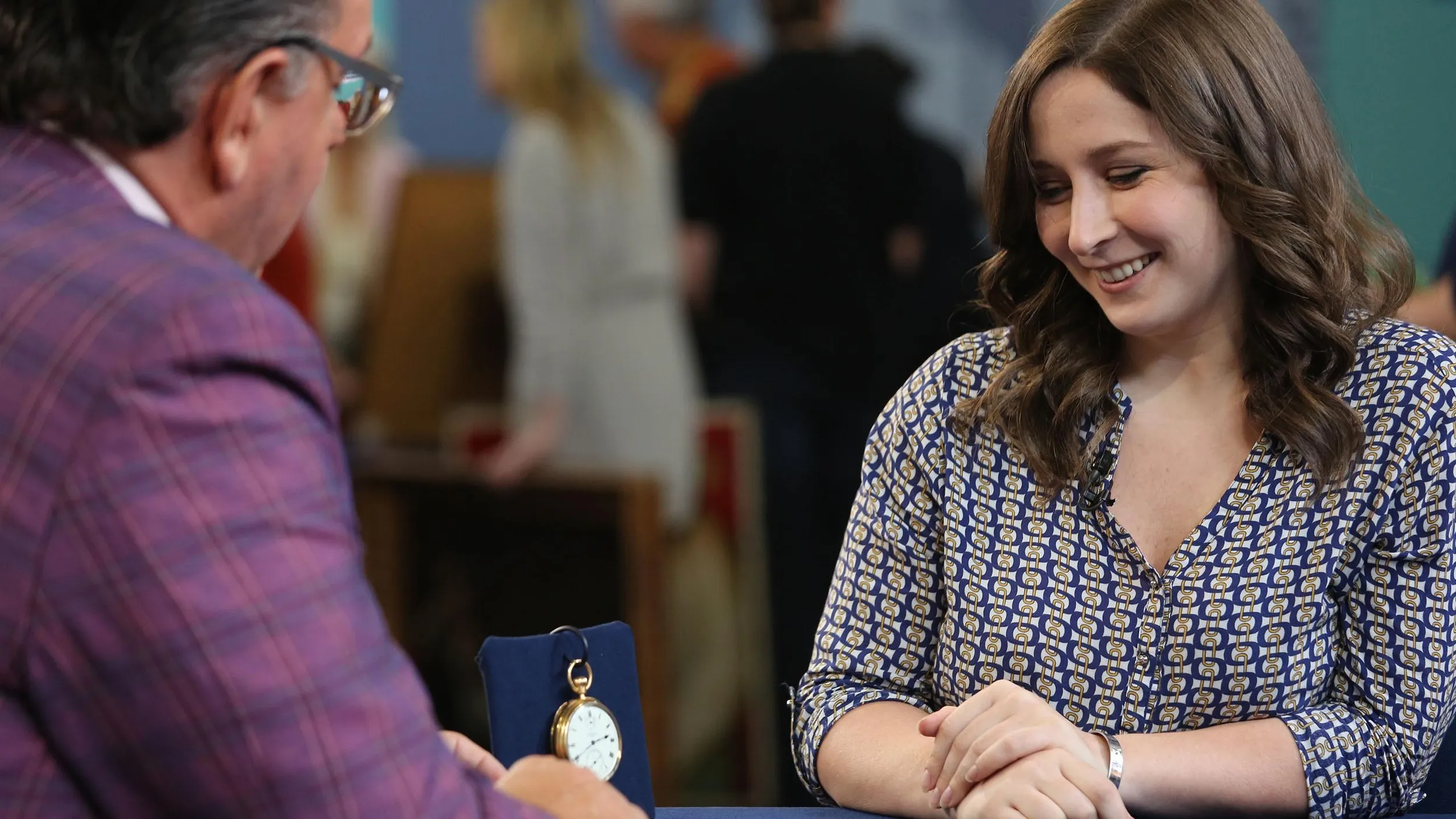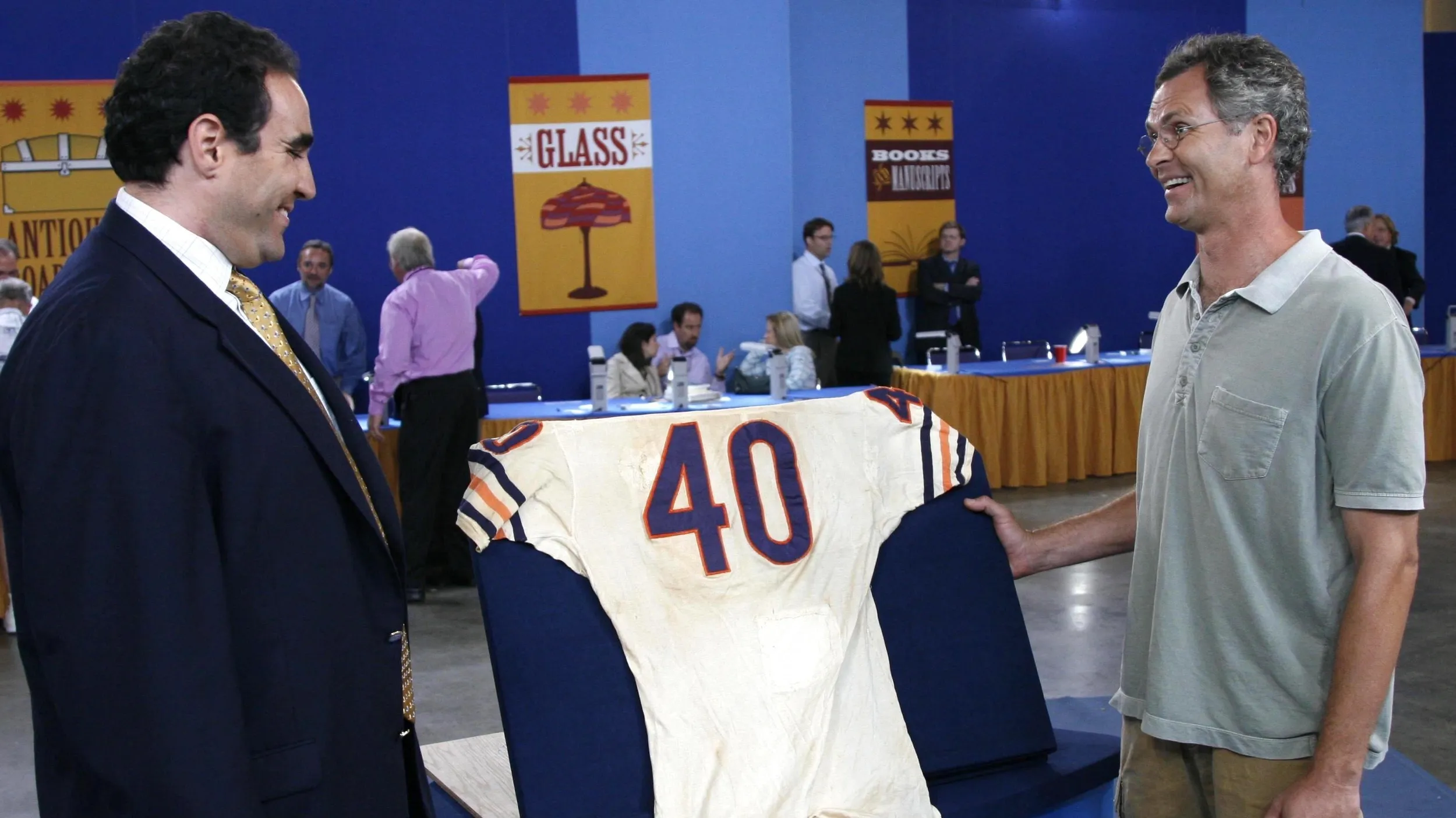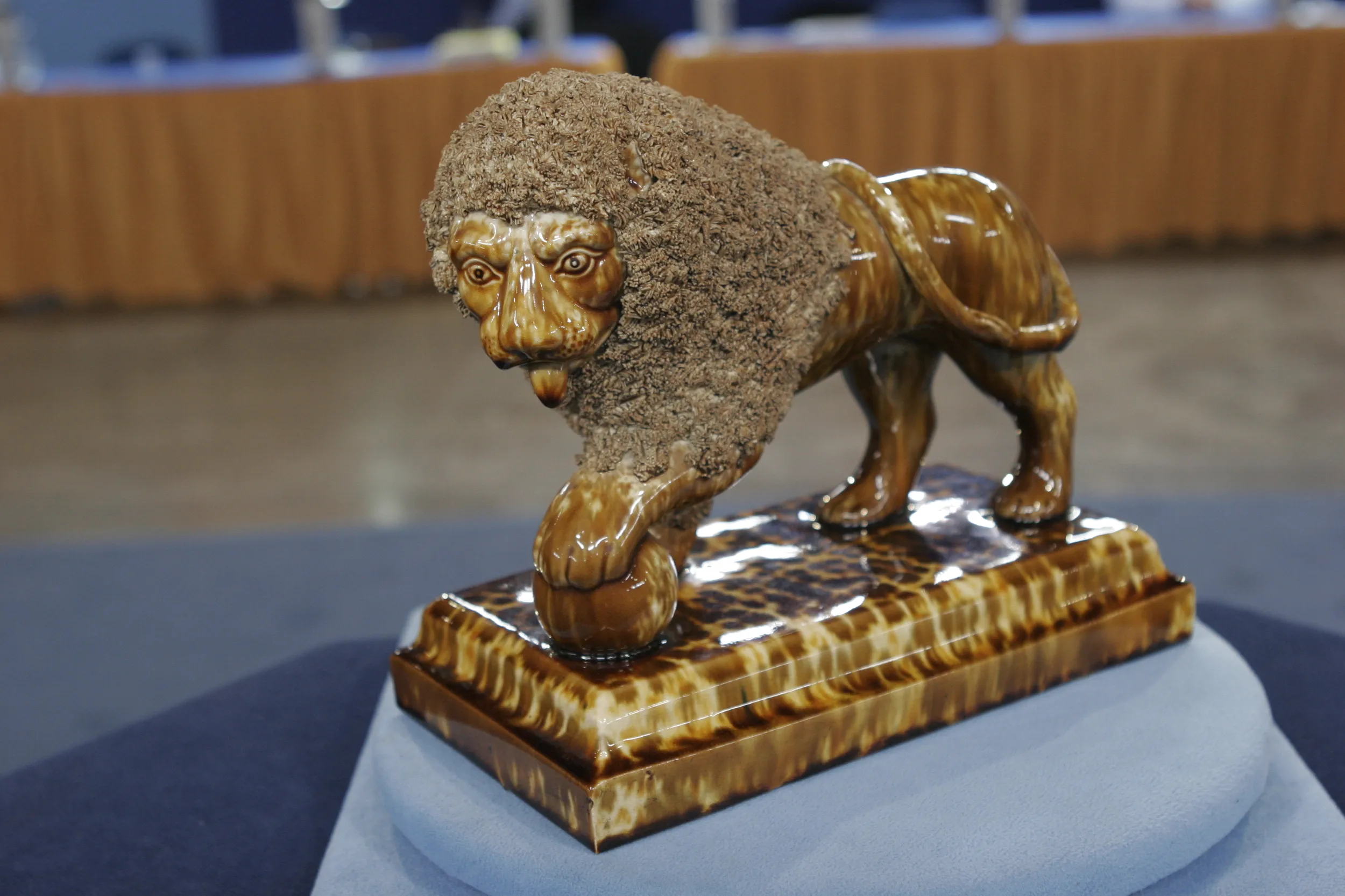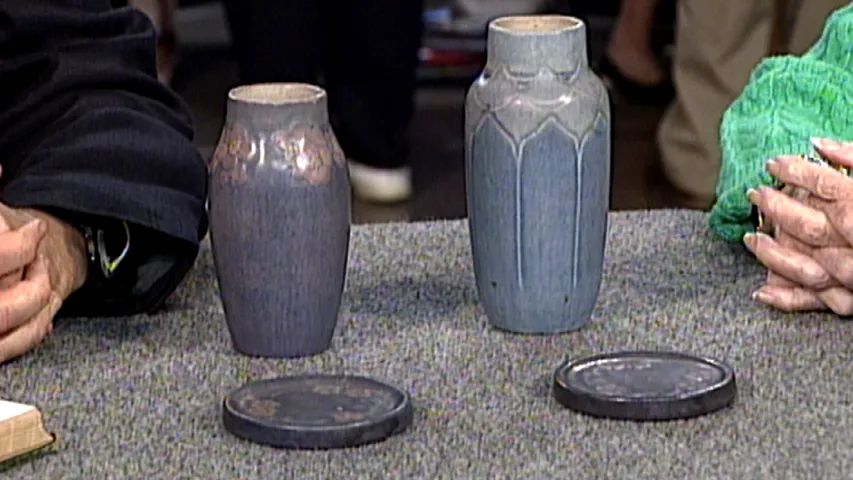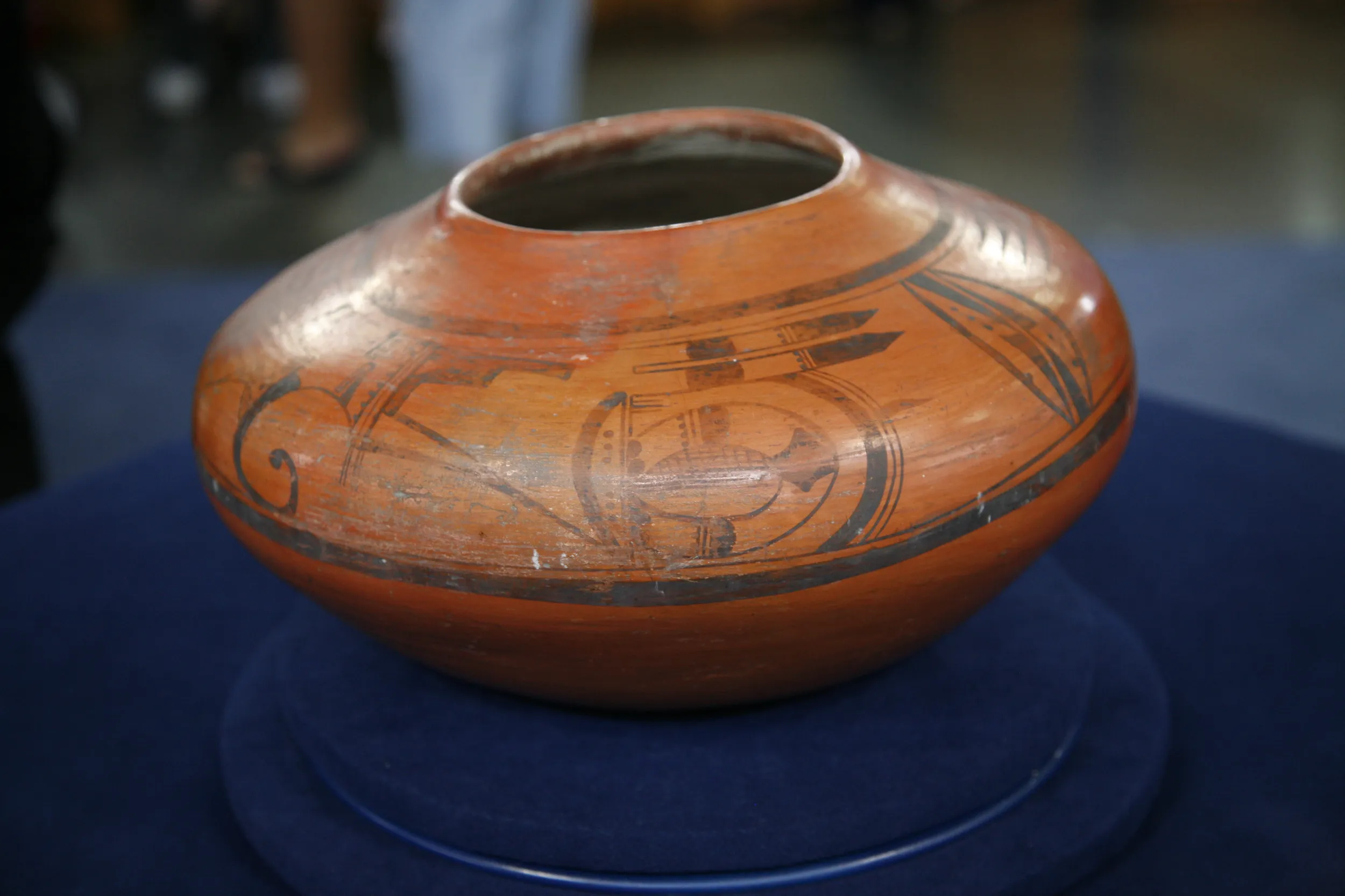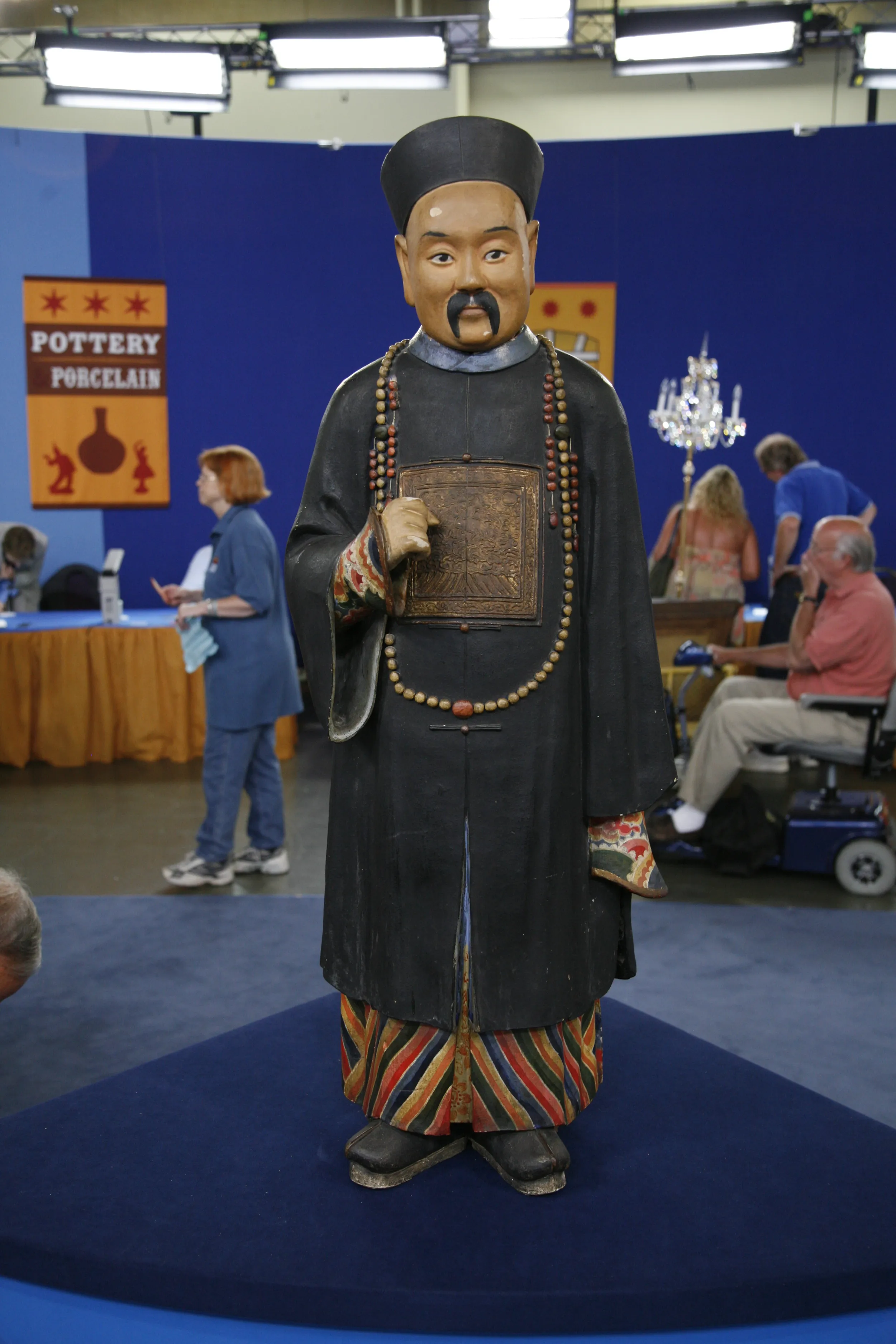GUEST: My sister was a artist--or is an artist, actually, still, but at the time, she was living up in northern California, and she became friends with another artist named David Gilhooly and his wife, Camille, and he used to come over for, for dinner, and instead of bringing a bottle of wine, or a cheese tray or something, he would bring one of his little pieces of art that he had made. And I was visiting one time, and I thought they were kind of fun, so she gave me a couple of them.
APPRAISER: So here I brought you dessert.
GUEST: Dessert, that's right.
APPRAISER: I brought you a chocolate-covered frog on top of a cupcake, or a chocolate-covered beaver.
GUEST: Mm-hmm.
APPRAISER: It's so clever. David Gilhooly is such an interesting character. He passed away about four years ago, and he was part of the original California Funk movement. And he was, in the 1960s, at U.C. Davis, the assistant to the very, very famous Robert Arneson. And Robert Arneson was a sculptor and a potter, and--along with some others—decided to kind of rebel against what was believed to be the fine art, which was by then very non-representational.
GUEST: Mm-hmm.
APPRAISER: So things that were so abstract for so long, and so well-regarded, and so posh-they wanted none of that. They wanted to go back to figural sculpting, but not just figural sculpting, goofy figural sculpting. And then, once it was goofy, it became very sophisticated again. Gilhooly would do things like a lot of food, for example, and he would adapt food and make it kind of crazy and give it these really bright glazes. And then he went on to frogs, which always reminds me of Monty Python. He's got all these little "crunchy frogs." and so like this, he would cover them, in chocolate sometimes, and other times, only with really bright glazes.
GUEST: Mm-hmm.
APPRAISER: So even though these really look like chocolate, they are indeed glazed ceramic. This Funk movement is this reaction against what has been established. It's also political, it's also a little bit angry. So with these frogs, or other Animals, Gilhooly made a lot of statements. I would like to show how they're signed here. It's a very easy signature to read. It's just scratched in, and these two are signed the same, and they're dated 1977. I would think that at auction, these would probably have a pre-auction estimate each of about $1,000 to $1,500.
GUEST: (laughs softly) For a chocolate frog. (laughing): Okay. You think my sister is going to want them back?
